| Back |
Batteries for beginners
If you would like to download this document as a pdf please click here.
We have some new members at the club who might need some help with the basics of electric flight. One mystery is batteries.
Lithium-polymer (lipo) batteries are the ones that model flyers mostly use for driving the motor. They hold quite a lot of energy for their size and last at least a couple of years if they are treated properly. Because lithium is very reactive (VERY!) it generates a high v oltage compared with other types. By definition a battery is made up of two or more cells, though we still use the word battery when there is only one cell. A few lipos use graphene. These give a slightly better battery but they are generally larger and heavier and cost more.
Let us look at a battery label. There are three key numbers on there. This example is:
2200 mAh 3S 40-50C
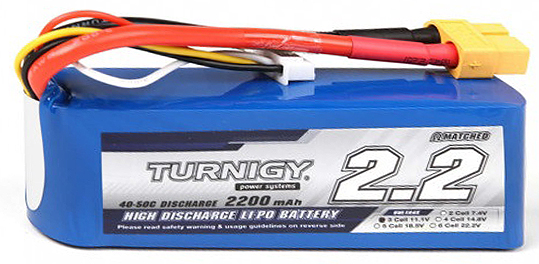
2200 mAh
The first number - 2200 - is the capacity in milli-amp hours (mAh). This is a measure of how much energy the battery holds. The higher the number the longer the flight, all other things being equal. The big 2.2 is the 2200 capacity in amp-hours (Ah).
3S
Usually this is a tick or a dot next to one of several options 2S to 6S. 3S means that the battery is made of 3 cells connected in Series so their voltages add up. Lipos usually have from one cell to six cells,1S to 6S. This number also gives you the voltage of the battery. When fully charged each cell has about 4.2 volts. The 3S battery will have about 12.60 V. There are some batteries with the cells grouped differently. A 3S 2P battery has six cells in two parallel groups of three in series. These are less common now.
40-50C
The C-rating tells you how much current the battery can safely produce. The word ‘safe’ here means ‘without coming to harm’ which means overheating and being damaged. All cells have electrical resistance. When they produce a current they warm up and waste energy. The resistance is small, ranging from 2 to 20 milliohms (mΩ). The lower the value the more current the battery can produce without damage. To find the safe maximum current multiply the capacity in amp-hours by the C-rating. You have to divide the mAh by 1000 to find amp-hours though it has already been done in the one in the picture. The C-rating of 40-50 means that the battery can produce a minimum of 2.2 x 40 amps (88 A)
25C is a common low rating but is fine for most small to medium size models and motors. C-ratings can be as high as 75 for large models and motors. The maximum safe current then is ridiculous. A 5 Ah battery with a 75C rating can provide 375 A. However the high C rating s hows that this battery will not waste as much energy at high current
Weight and size
These are not printed on the label, but are important. You find these numbers in the seller’s technical data. Make sure the battery fits into your model. Lighter is usually better but you can usually move your battery around to balance your model.
Common sizes
The one mentioned above is very common. A majority of small models use this size. Larger models might use 5000 mAh 4S 35C, though many go up to 6S. If you want more cells than this it is usual to connect two batteries in series using an adaptor. Use two that are exactly the same. Doing it this way, two 3S batteries make one 6S with the same Ah as one of them and two 4S make one 8S. One reason for that is that most battery chargers will only charge up to 6S. Batteries can also be connected in parallel using a different adaptor to increase the capacity (mAh) and hence flight time. Two 3S 2200 in parallel give one 3S 4400.
Parallel adaptor
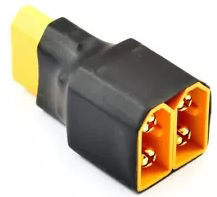
Series adaptor
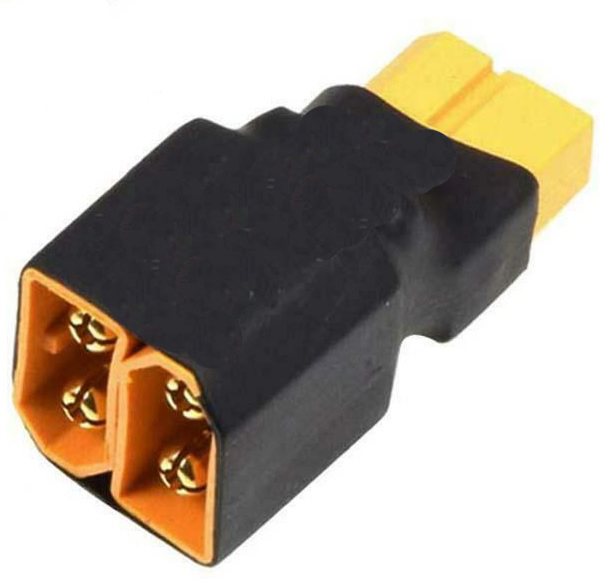
Caring for your batteries
Temperature affects lipos. They work less well if very cold. If they get very hot in direct sun they can swell and suffer damage, especially whilst being charged. How you charge them also matters. Always use a good quality charger, more of which later. If you are in your house or workshop whilst they are charging put them in a fireproof bag or a metal box. They don’t often catch fire but it does happen sometimes. When you read of a house fire caused by a charging battery it is usually a lipo. Take great care not to short out a lipo as they start to smoke and then turn into a fireball. Remember that lithium is very reactive.
It is bad practice to run your batteries down to below about 20% of their capacity. Preferably don’t go that far. How do you know how far it has gone? If you have telemetry you can keep an eye on the battery voltage whilst you are flying. A FrSky Taranis transmitter can be programmed to tell you when you reach a critical voltage. If you don’t have telemetry you will need to experiment. Buy a battery capacity meter and then fly for say five minutes. Land and check the %age left and set your transmitter warning timer to a suitable time. For example if you have 60% left after five minutes you can probably safely fly for ten minutes. After checking a few times you will know how long you can fly with a particular model and battery size, though of course flying at high throttle will drain the battery more quickly.
This table gives you an idea of the voltage readings and percentage charge on lipos when not running a motor.
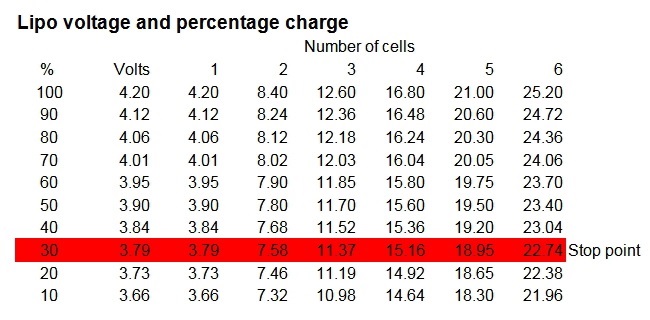
One tip is to stick a charge indicator onto each battery. There is a slider that can uncover the green end when the battery is fully charged and the red when it needs charging. I move it to half-way when the battery is in storage charge. Here are some EVPeak ones I bought from Banggood. They are more robust than the Hobby King ones and it is easier to peel off the backing.
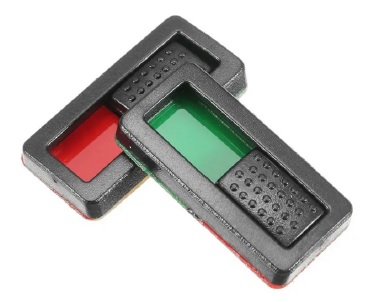
Charger
This is a crucial choice. You can buy chargers that only work from a 12 V dc power supply. This could be a large capacity 12 V leisure battery or a mains power supply unit. Don’t charge your lipos from your car 12 V socket because you might not then be able to start your car. You can get chargers that plug into the mains and others that can work on both 12 V and mains.
Some chargers can charge more than one battery at a time. Each channel should be 100 W or more. You won’t need that much at first but you will before long. My favourite charger can charge four batteries at once and each channel can produce 100 W. It can also use mains and 12 V. Yes it was expensive but I’ll never need anything better and Santa brought it anyway so it was free.
Balancing
If you simply charge a lipo battery by connecting only its power wires, when fully charged each cell will have a slightly different voltage. For the battery to work at its best, and to last a long time, the voltages should all be made the same. This is called balancing. All chargers do this as an option and some do it automatically if the balance lead is plugged in. Always balance charge. It takes a little longer as the balancing is done at the end but it is worth it.
Storing lipos
Keep lipos in a silver-coloured fireproof bag and preferably then place the bag in a metal box such as an old ammunition box. Ideally do not keep your lipos in your house. Better that your shed goes up in flames than your house. If you won’t be flying for a while discharge your lipos to storage voltage. There will be an option on your charger for this. I rarely do this but I suspect that my laziness reduces the life of my batteries.
Safety bag and my tattiest ammo box
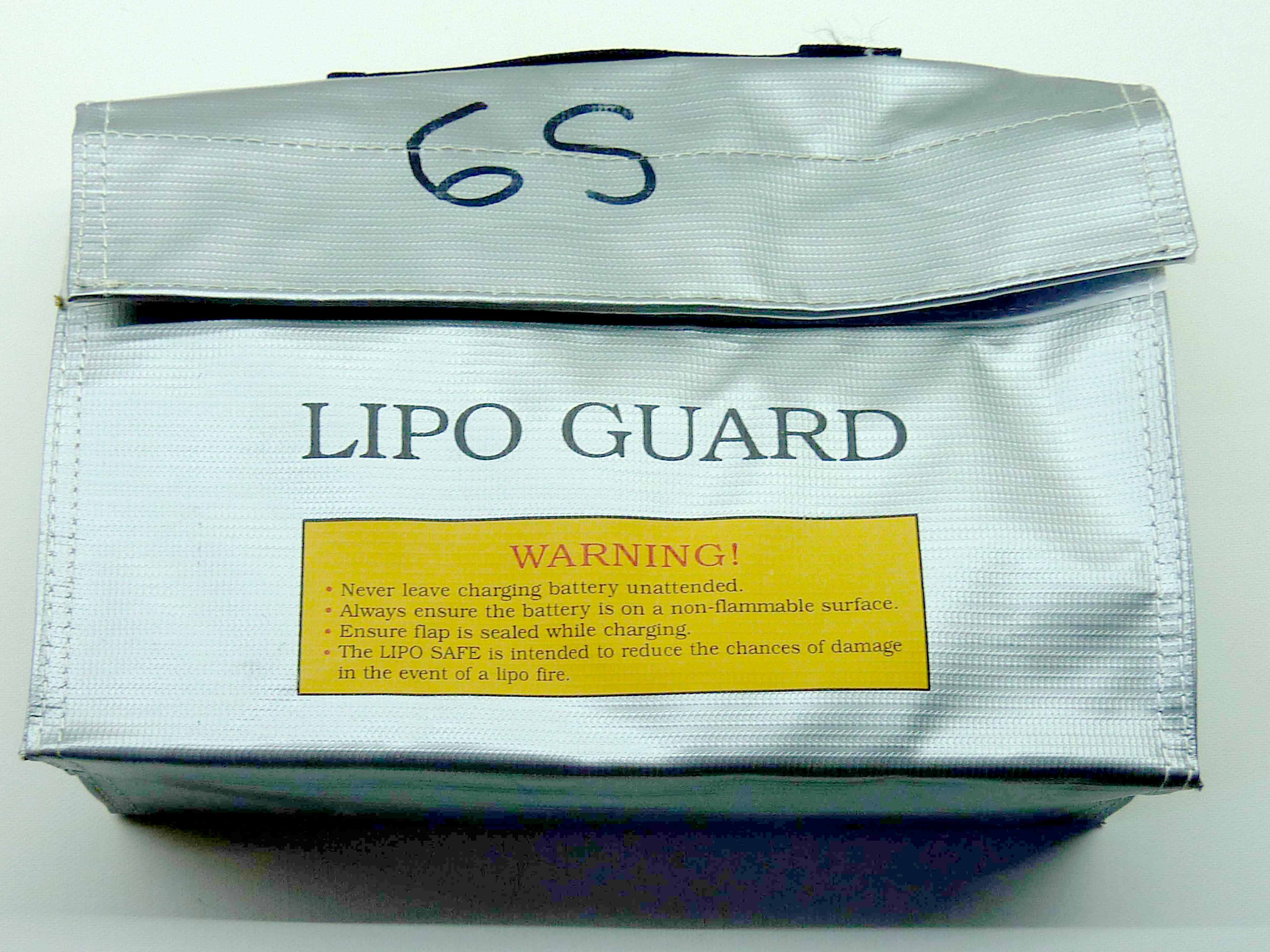
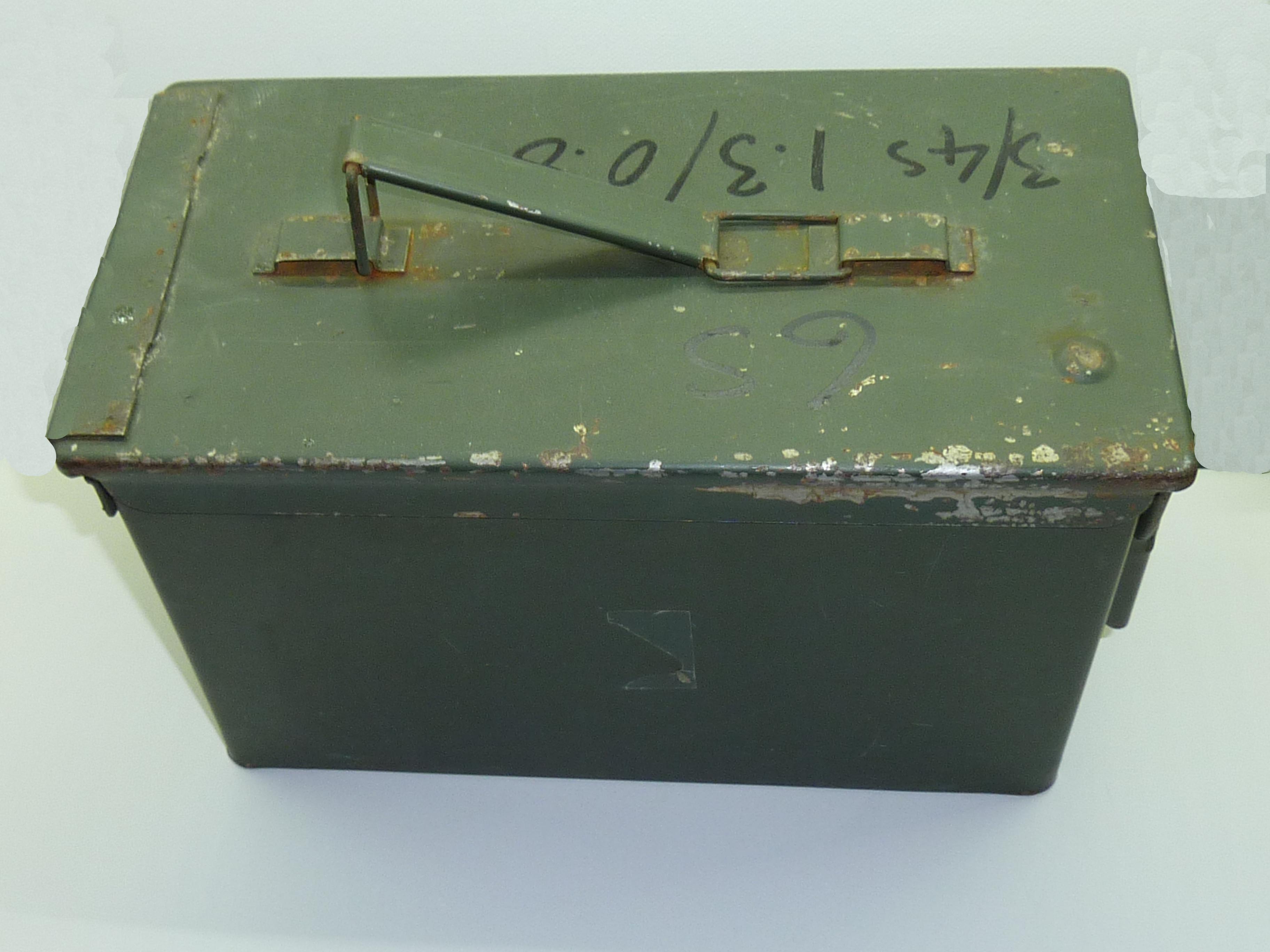
Connectors
There are two types of wire coming out of a lipo. There is a pair of thick wires leading to a largeish connector. This is to go to the electronic speed controller and motor and is used to charge the battery. Three types of connector are common. By far the most common is coloured yellow or black and is called XT60 or the larger XT90. The second is the ‘Deans’ connector and is usually red with two flat metal connectors at right angles. The third is the banana or bullet connector. These are round connectors and there is a separate one on each of the positive and negative wires.
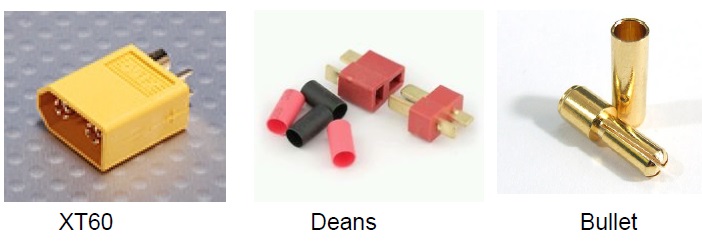
The other lead has several thin wires, in fact one more than the number of cells, leading to a white, flat connector. This is the balance lead and goes into the balance socket on your charger. If the battery label is damaged and you don’t how many cells there are, count the wires and subtract one. A 3S has four wires. This is like counting the flamingoes in a pond where you count the legs and divide by two. You can see this lead in the above picture.
Cold batteries
Like all batteries, lipos don’t work as well when cold. I recently flew a model for the first time in ages. The batteries had been stored in a cold workshop. The model barely got off the ground. I removed the battery and charged it, so warming it. The model then flew normally. Some people build a heated box for winter flying to warm batteries. Some run the motor at low revs for a while to do the same. Charging of course also warms them.
Signs of old age
Lipos tell you when they are getting beyond use, as they start to swell. A little swelling is alright but bulging out is not. You might have to do an emergency landing or even watch your model catch fire. Most up-to-date chargers have an option to measure the internal resistance of each cell. If you measure and record the values of a battery when it is new, you can then see how much it has changed later. For example if a cell started at 4 milliohm (mΩ) and now reads 10 it might be alright, but I would probably discard it if it read 20. A battery where one cell has a much higher reading than the others is also suspect. Another sign that a battery is near to its end of life is that the model no longer climbs at the rate you expect or might not even climb at all.
Disposal of old lipos
Once they are fully discharged using a charger, lipos are safe to dispose of, ideally by recycling. How you do that will depend on where you live. Some suggest dropping them into salty water just to be sure, though I have never been sure if that was a joke.
| Back |
Peter Scott (c) 2022
Last edit 15 November 2022